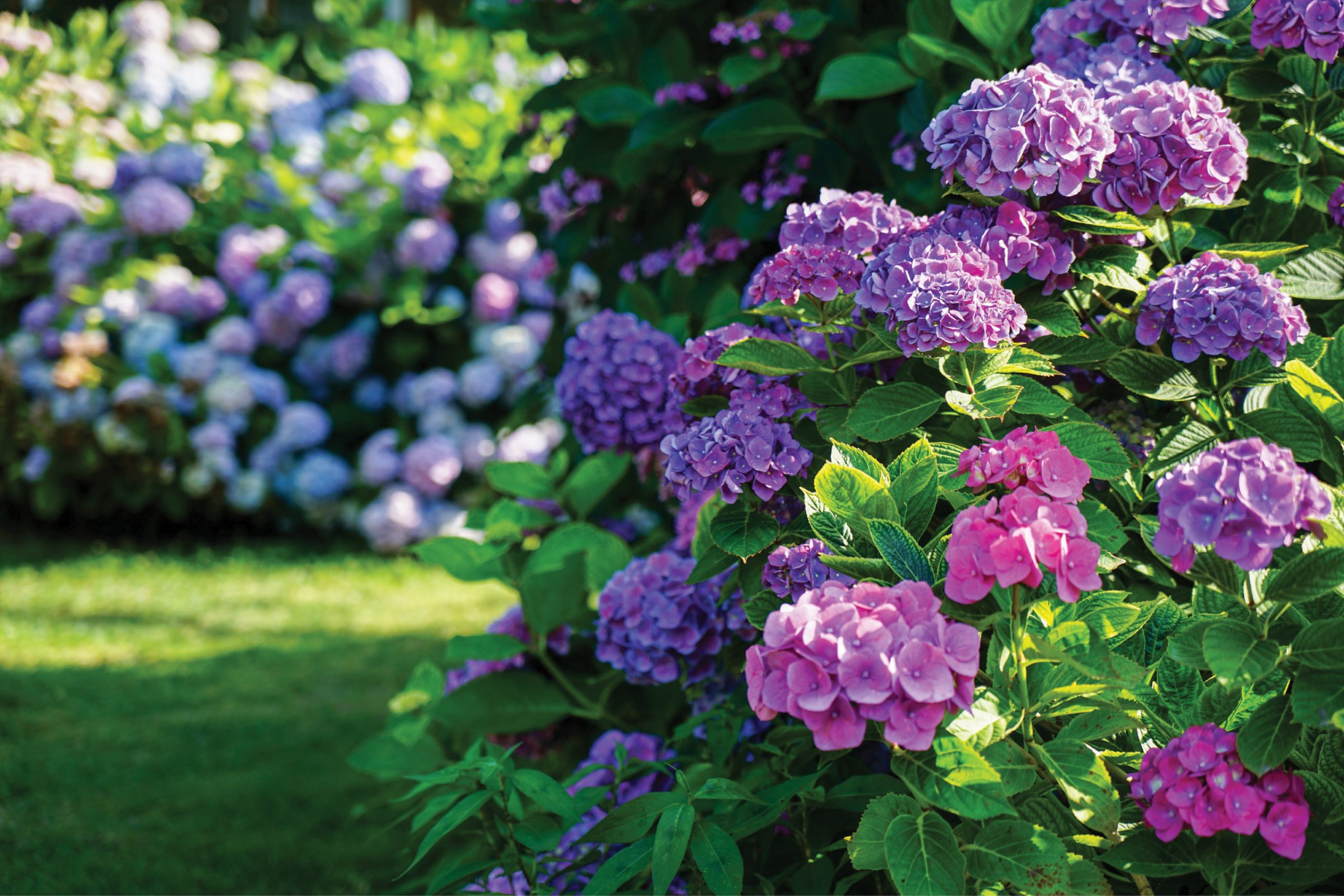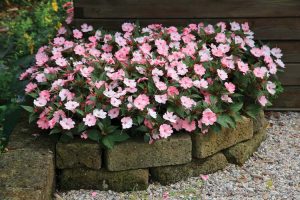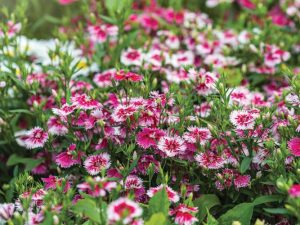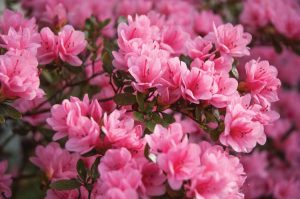We’ve almost made it to spring. With the weather warming up and the sun shining more, it’s time to think green—and pink and yellow and purple! Beautiful plants are a great way to add some curb appeal. Here are some options that can ensure your yard is bright and blooming from this season to the next.
hostas
- When to plant: Early spring or early fall are the best times to plant hostas. You’ll want to avoid planting them during rainy times or while it’s particularly hot.
- Where to plant: Hostas do not do well in direct sunlight, but how much shade they need depends on the color of the plant’s leaves. A general rule of thumb: The lighter the leaf, the more sunlight necessary.
- Care notes: Fertilize your plants each spring. Hostas are tolerant of drought, but they are at-risk for crown rot, making proper drainage important to keep them healthy.
impatiens
- When to plant: The best time is after the last spring frost.
- Where to plant: Impatiens do better in shade and will not thrive in full sun. A place that receives two to four hours of filtered sunlight in the morning or afternoon is best. They can grow in heavy shade, but there will be fewer blooms.
- Care notes: For the plants to thrive, they should be fertilized every two weeks. Impatiens need two inches of water a week, unless the temperature is over 80 degrees when they’ll require four inches.
loropetalums
- When to plant: These shrubs can be planted at any time of year. If you do so in the summer, they will require extra water, so they can establish themselves in the hot weather.
- Where to plant: The best location is one with morning sun and afternoon shade, but loropetalum can handle full sunlight conditions.
- Care notes: Apply fertilizer annually in the spring. Unless it rains, you’ll need to water loropetalum once a week. As evergreens, they can be left alone during the winter. Their growth will slow, so they do not require pruning or watering, unless there is a drought.
climbing roses
- When to plant: They can be planted at any time of year, but the best time is between November and March as long as the ground isn’t waterlogged or frozen.
- Where to plant: Climbing roses like full sun. To take advantage of their climbing nature, plant them against a fence, trellis or even a tree.
- Care notes: Regular pruning is necessary. Climbing roses also are not tolerant of the cold, so you’ll have to protect them during the winter. Cover them with something like burlap during the colder months.
dianthus
- When to plant: From seed, plant in early spring, ideally when there is still the possibility of a light frost. Nursery plants are best planted in the cool weather of fall or early spring.
- Where to plant: Full sun is best, but it will also tolerate partial shade. Made sure the spot you pick gets at least six hours of sun.
- Care notes: Since dianthus is susceptible to root rot, don’t water it unless its soil is dry. Fertilize it every six to eight weeks during its growing season. Also be sure to prune dead foliage to encourage new growth.
daylilies
- When to plant: Bulbs can be planted in spring, summer or fall. It’s best to plant them right away after you receive them.
- Where to plant: Daylilies should be planted in full or partial sun. They require four to six hours of sun a day.
- Care notes: Cover the soil in one to four inches of mulch to prevent weeds and retain moisture. Esbalished plants can tolerate dry conditions, but generally, daylilies require an inch of water per week. They thrive in moist, not soggy, soil.
azaleas
- When to plant: It’s best to plant them in the fall or spring.
- Where to plant: Partial shade is best. Find a spot that gets sun in the morning but experiences shade in the afternoon.
- Care notes: Azaleas should be watered every five days. Make sure to soak the roots, but avoid wetting the flowers or leaves. Use heavy mulch to conserve moisture in the soil. The plant does well with fairly low nutrient levels, so make sure to carefully fertilize. Overdoing it could damage the delicate roots.
hydrangeas
- When to plant: Fall or early spring. You want to ensure the shrub has enough time to develop a root system before it blooms.
- Where to plant: Plant hydrangeas where it is likely they will get sun in the morning and shade in the afternoon. Don’t plant directly under a tree or else they’ll have to compete for water and nutrients.
- Care notes: Water deeply three times a week. Doing so in the morning will help prevent the plant from wilting on hot days. Add mulch to keep the soil moist. What fertilizer to use and when to apply it depends on the type of hydrangea you’ve planted.
















